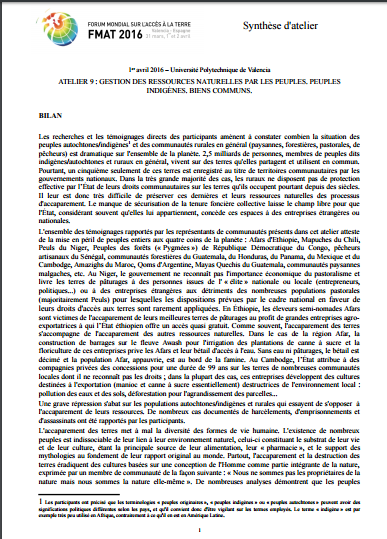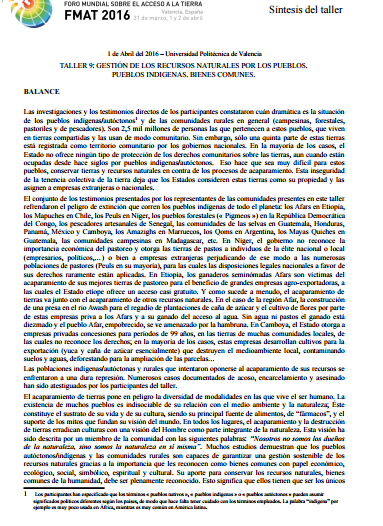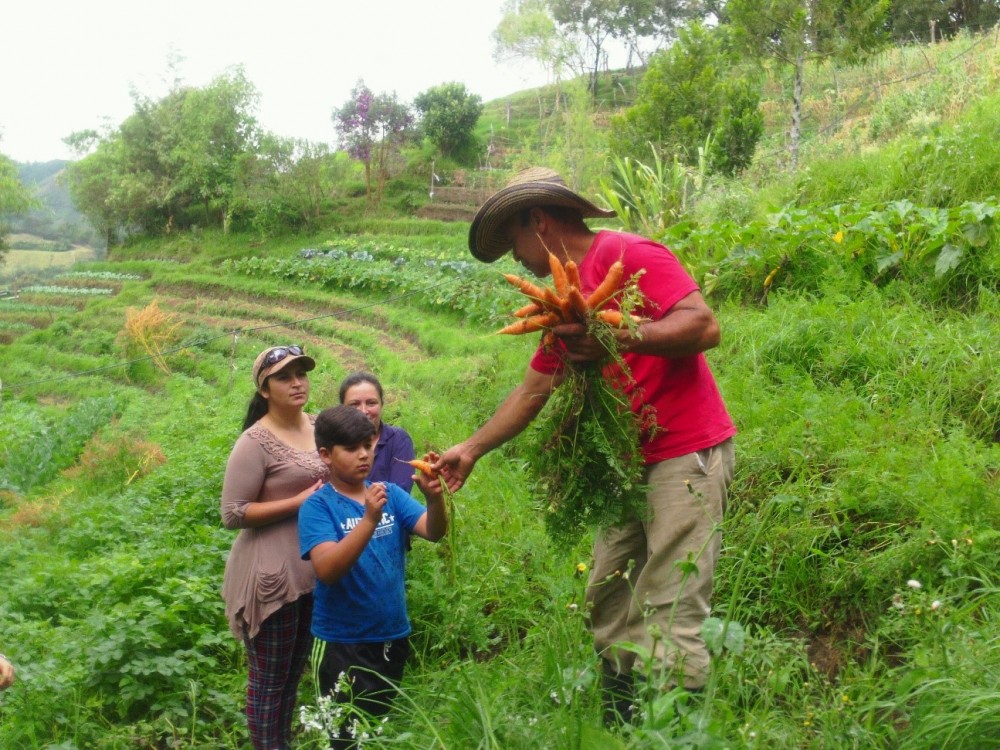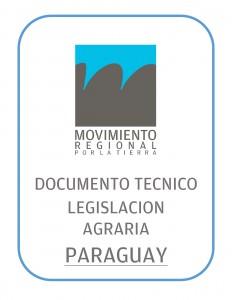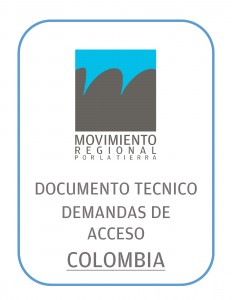ATELIER 9 : GESTION DES RESSOURCES NATURELLES PAR LES PEUPLES. PEUPLES INDIGÈNES. BIENS COMMUNS.
Les recherches et les témoignages directs des participants amènent à constater combien la situation des peuples autochtones/indigènes et des communautés rurales en général (paysannes, forestières, pastorales, de pêcheurs) est dramatique sur l’ensemble de la planète. 2,5 milliards de personnes, membres de peuples dits indigènes/autochtones et ruraux en général, vivent sur des terres qu’elles partagent et utilisent en commun. Pourtant, un cinquième seulement de ces terres est enregistré au titre de territoires communautaires par les gouvernements nationaux.

